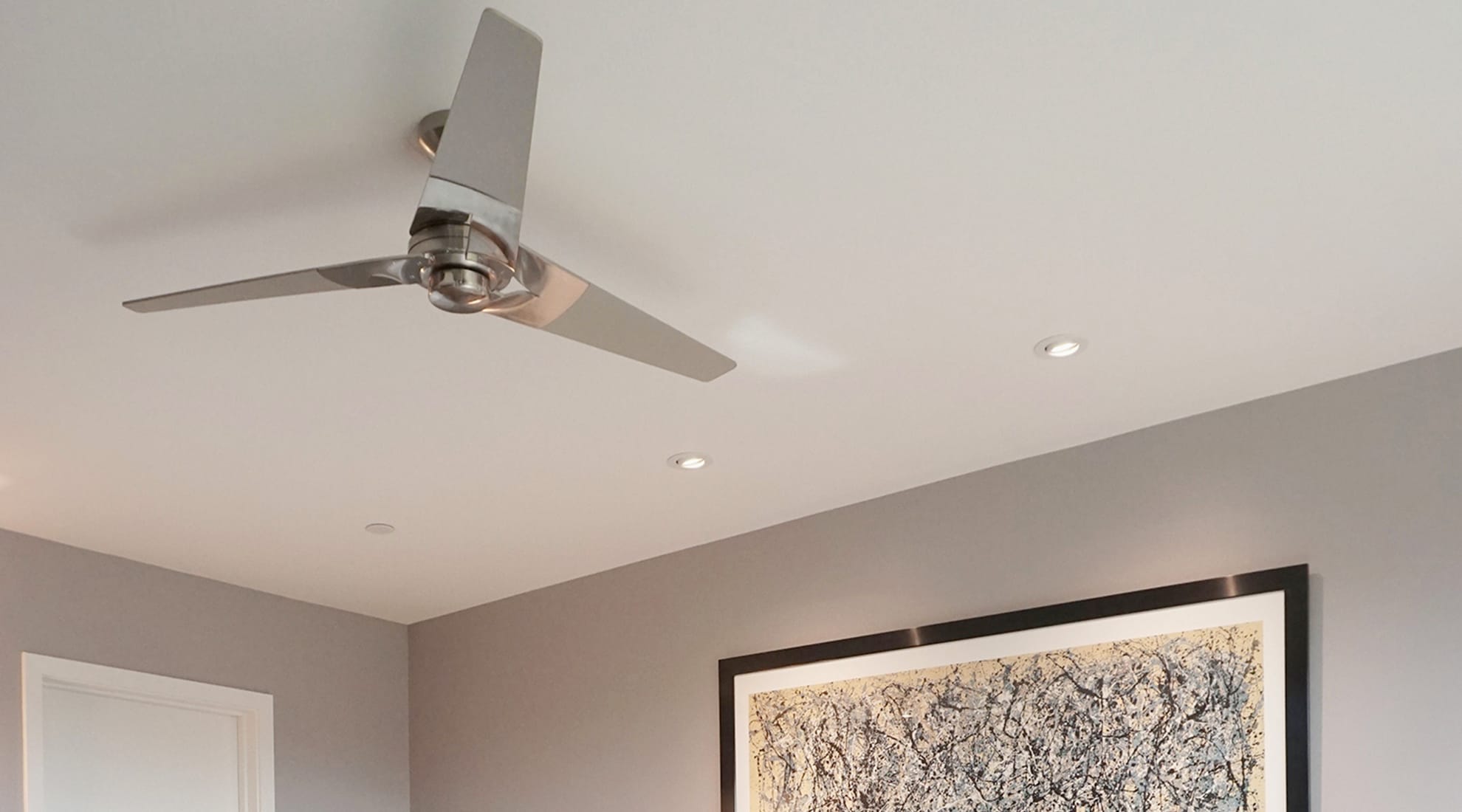To the Trade:
Sourcing Ceiling Fans
For many clients, having the function of a ceiling fan is a non-negotiable in bedrooms, living spaces and more. Here’s how to source the right fan for your clients and ensure your thoughtful design isn’t compromised.

Sourcing ceiling fans comes with a number of considerations, from ensuring the right size for proper airflow, to meeting codes, to simply choosing one that best fits your clients’ needs. When your project calls for a ceiling fan, here are the 5 factors to think about to get it right for your clients:
1. Fan Size
The size of a ceiling fan is typically referred to as blade span, measuring the distance across the fan from blade tip to blade tip. The smaller the room, the smaller the fan needed:
| Room | Room Size | Ceiling Fan Size needed |
| Bathrooms Breakfast nooks Laundry, mud or other utility rooms |
Up to 75 square feet | 29 – 36 inches |
| Bedrooms Kitchen Dining rooms |
Up to 175 square feet | 42 – 48 inches |
| Large Bedrooms Family Rooms Media rooms |
Up to 350 square feet | 52 – 56 inches |
| Great Rooms Other Large Spaces |
350+ square feet | 60+ inches |
2. Ceiling Considerations
| If you’re working with a ceiling that is… | Choose: |
| 8 feet or lower | A hugger or flushmount fan |
| ~9 feet high | Close-to-ceiling fan, which will have a short downrod |
| 9+ feet high | A ceiling fan with a downrod, ensuring the total hanging height is no lower than 7 feet above the ground |
| Sloped | 1. A fan that specifies “sloped-ceiling adaptable” to ensure the downrod can rotate to a certain angle and ensure the fan hangs straight. 2. A separate sloped-ceiling mounting kit. |
3. Hanging Height
Two tips on ensuring a ceiling fan hangs safely and properly:
- The bottom-most point of a ceiling fan should hang no lower than 7 feet above the floor.
- If you’re determining how much downrod you’ll need, aim to leave a minimum of 8 inches between the ceiling fan blades and the ceiling for maximum airflow.
4. Airflow: Cubic Feet per Minute
For a fan to fully meet your client’s needs, it has to work—they’ll likely want to be able to feel the airflow that a ceiling fan creates. To ensure you choose one that brings the breeze, you’ll want to look at a fan’s CFM: Cubic Feet per Minute.
This is how much air a fan moves. It is affected by the fan’s motor, blade pitch and the span of the blades. The higher the CFM number, the more air a fan moves.
5. Style, Blades & Lights
With function comes form, and there are also considerations you’ll want to make to ensure you’re choosing the right fan for your client’s space without sacrificing your design:
Number of blades: While there is a bit of physics involved, the difference between a 3-blade, 4-blade or 5-blade fan is slight in terms of performance and air movement, and these are the most common choices for a residential space. A higher number of blades on a ceiling fan can be slower and circulate less air.
Light Kit: Some fans come with an integrated light for overhead illumination; some include a cover that can be used over the light itself for a no-light look while still having the option. And others forgo the light all together. The choice is really about preference; if you forgo the light, be sure the room still has the right layers of light to create general illumination for the whole room.
Style: Do you want the fan to contribute to the design of the room, or subtly fade into the background? The finishes and overall look of a fan can play into the former; a white finish can help a fan disappear into the ceiling. The breadth of modern fan styles reaches far and wide to ensure you can find the just-right one that fits the needs of your client, and your design.
Remember: Lumens trade partners save up to 25% off retail pricing every day. If you haven’t already, join our trade program to receive these benefits and more.





